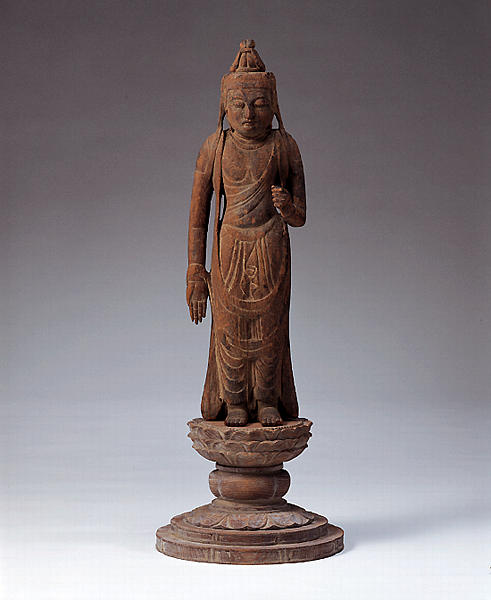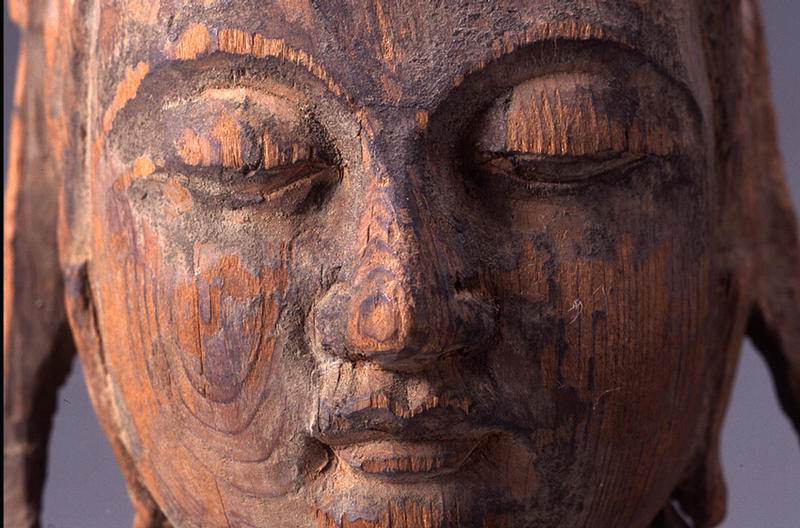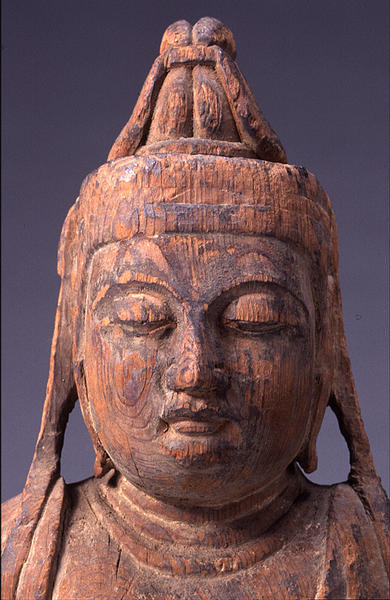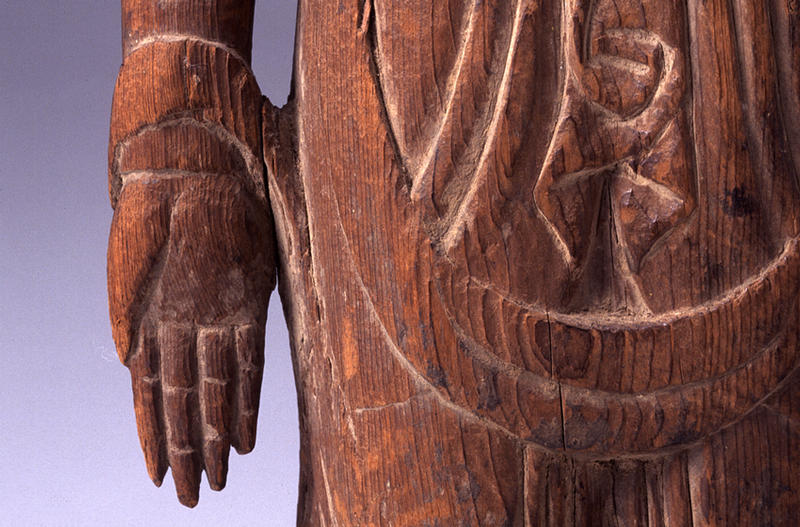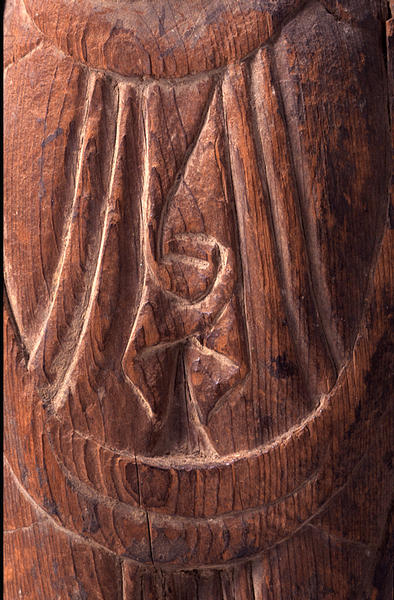菩薩形立像
- 平安時代後期
- 10c
- 一木造
- H-51.4
平安時代 10世紀
木造
像高:51.4cm
左手に執る持物が欠失しているが,おそらく華瓶(蓮華の挿された瓶)だと推定され,そうであれば観音菩薩と考えて間違いないだろう。右手をまっすぐに垂下し,全指を伸ばして掌を前へ向けるしぐさは珍しいともとられようが,平安時代前期の古像にはときどき見うけられる。
両足先と足ほぞを除くすべてが,ヒノキと思われる一材から彫成している。両側頭部か
ら垂れる冠ぞうの体から浮いた部分,両手や天衣の胴体から離れた部分まで,別材を矧
ぎつけることなく,一材から作り出すという精細な彫技は,本格的な一木造の像を目指したものとして注目される。ところで,この程度の大きさを白檀で作ることがあり,それを檀像と称して,古来珍重されてきた。そのような像は細かな彫技を誇示することが常で,表面は素地か単色の薄彩色が多かった。しかし,日本では白檀が得難かったので,別の代用材でこれを作ることも行われた。したがって,本像はヒノキ材による代用材檀像の一例とみなされるもので,彫刻のくぼみに残る白色も,表面にかけられた薄彩色の残存かと推定される。
丸い顔に,小さな鼻,あまり伸びない目や口などからくる落ち着いた雰囲気は,小像のため通常の像と一概に比較はできないけれど,仏師康尚の活躍した10世紀末の風が感じられる。(伊東)
Catalogue Entry
Heian period, 10th century
Single wood-block construction
Figure height, 51.4cm
While the object originally held by this sculpture's left hand is now lost, if we infer that it was a flower vase (holding a lotus blossom), then this image can probably be considered an image of Kannon Bosatsu (Avalokites⇔vara). The right arm hangs straight down, and all of its fingers are extended, with its palm facing forward in a rare posture. This posture is, however, occasionally seen in old images from the early Heian period.
With the exceptions of the fronts of the feet and the foot tenons, the entire sculpture is carved from a single block of what appears to be hinoki (Japanese cypress). The free-floating areas that hang from both sides of the head and the areas of the arms and ten'ne draperies that are separated from the main body are not separate pieces of wood dovetailed onto a central structure, but rather parts of the single piece of wood. This kind of detailed carving is an example of work by a carver who has studied actual single-block construction images. There are examples of sandalwood images this large that are generally called danzo, or sandalwood images, and they were highly prized. Normally this kind of image would have boasted finely detailed surface carving, but there are many which have been lightly colored with a single color. As there were no natural sources of sandalwood in Japan, there were also instances where this kind of image was created from some substitute wood material. This image can thus be considered an image carved in hinoki as a substitute for a sandalwood image, and the white color that remains in the hollows of the surface carving suggests the remaining presence of a lightly applied coloring.
The round face, small nose, and relatively un-elongated mouth and eyes all give the image a calm appearance, and while as a rule this kind of small image is not comparable to ordinary-sized images, there is a sense of the style of the period of Kosho's activity at the end of the 10th century. SI
